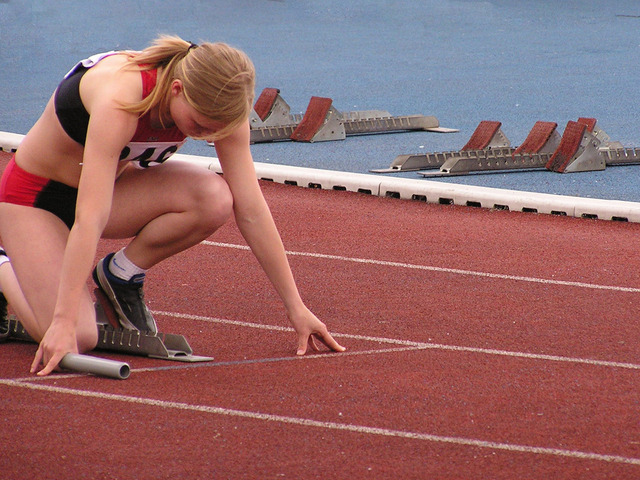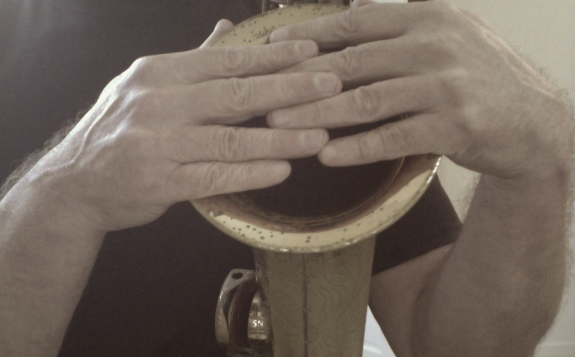So you’re inspired to take your practice to a new level of commitment. You’re ready to spend the time and the energy. Ready to become more focused and disciplined. That’s great! Riding that wave of enthusiasm is going to take you into a deeper realm of self-expression (and satisfaction).
I’d like to offer an idea that might help you make that transition in your practice time more effective: Think like an athlete. After all, athletes and musicians have something in common. Both spend lots of time practicing precise, repetitive movements.
Many years ago I became deeply involved in endurance sports (cycling and triathlon, in particular). Any wise endurance athlete knows that training has to be done in cycles. You simply can’t train hard all year long (potentially injurious and counterproductive). You need a program that includes carefully planned work at different levels of intensity and duration, as well as plenty of strategically applied rest.
Competitive endurance athletes often plan their training in yearly cycles (including several shorter cycles nested within the year), with specific goals about when to be in peak condition for particular events. At the end of every competitive season comes the “off-season”, which is essentially a carefully prescribed period of rest.
This rest season is absolutely essential to the continued success of the athlete. It promotes mental and physical recovery, as well as providing an important period of reflection about the effectiveness of the training efforts of the previous season.
After this rest period, the athlete begins to train again. And the smart athletes realize that they need to scale back their efforts considerably from where they were at the end of the previous season.
They can’t just start hitting it hard, no matter how enthusiastic they are. (This is true even if the athlete has maintained a reasonable amount of fitness throughout the off season by means of less intense, yet regular physical exercise and activity.)
And the same is true for musicians. Even if you’ve been practicing regularly (let’s say, for example, an hour a day) and you want to significantly increase your practice time, you’re best off by doing it gradually.
One of the best pieces of advice given to me by an excellent cycling coach some years back, has also helped me in my practice as a musician. He said to attain the optimum results when increasing my training efforts, I should always aim for “teasing myself” into better condition.
In other words, each training session should leave me feeling like I want to do a bit more, go a little further. And then the next day, I dig a little deeper, but still “teasing” myself into condition. Still hungry and curious for more.
As you might guess by now, this approach to physical fitness training has helped me significantly as I apply it to increasing my musical practice efforts.
Many of the musicians that come to me for Alexander Technique lessons do so because of chronic pain and/or injury they’re experiencing as they play music. There are several causes of their pain: excessive tension, misdirected muscular energy, distorted posture, to name but a few. Often these problems are exacerbated by practicing “too hard”.
So besides teaching these musicians how to play with far less effort and tension, part of my job is to teach them how to safely build their practice intensity back up. I show them how to “tease themselves” into better condition.
Here are some things you can do to help you safely and effectively increase the intensity and duration of your practice:
- Stop before you get tired. Don’t bring yourself to exhaustion during any point in your practice session. Even though you’re working hard, aim for feeling energized as you finish. A “good kind of tired”, instead of a complete wreck.
- Improve your awareness as you practice to notice where and how you might be working too hard. In particular, notice your neck, shoulders, back and legs. Think release and mobility instead of tension and holding.
- Notice your mental states. Are you able to bring 100% of your attention to the act of practicing? Are you thinking clearly each time you start a new phrase (or attack a note)? Do you feel “foggy” or fatigued during any point of your practice session?
- Recognize intensity. Not all practice is equal. One hour of long tones in the upper register of a brass instrument is far more taxing than 2 hours of easy, melodic etudes in the lower and middle register. So don’t just think practice time, weigh in intensity as well. Be willing to make a shorter session if it has more intense work in it.
- Become disciplined about time. Work in pre-specified amounts of time. Avoid going from practicing one hour a day to 3 hours in one session. Spend a few weeks building up to this duration.
- Become disciplined about stopping. I rarely practice anything for more than 15-20 minutes without putting my saxophone down and walking away from my practice area, even if just for a couple of minutes. If you get in the habit of doing this, you’ll avoid a significant amount of accumulated fatigue (both physical and mental). Also, give yourself permission to stop at any moment you feel like you’re straining or misdirecting your efforts. Mastering the art of stopping is essential to your safety and your improvement.
- Become disciplined about resting. This goes hand in hand with stopping. Rest many times during a practice session, turning a one hour period into 4 short practice periods with a few minutes of rest between each. Then give yourself a good 5-10 minute rest at the end of the hour. Lying in constructive rest is a great way to recharge your batteries at the end of each practice hour. Take a day off each week from practicing.
- Think in training cycles. Just like the endurance athlete, modulate your training efforts. Have some easier days, some more intense days. Also consider easier weeks, and more intense weeks.
- Make your aim to finish each session wanting more. This brings us full circle to my first bulleted point above. Put your instrument away with a sense of curiosity, a sense of longing to explore more, to go deeper. At first this might seem unsatisfying (or even frustrating), but as you gain control over your ability to stop, your ability to rest, your ability to manage your time effectively, you’ll find a deep sense of accomplishment and confidence in your practice efforts (not to mention you’ll really improve your playing!)
The similarities between the musician and the athlete are many, and I’m certainly not the first to have drawn these comparisons. By thinking more like an athlete, you’ll change your practice in a positive, progressive and sustainable way.

